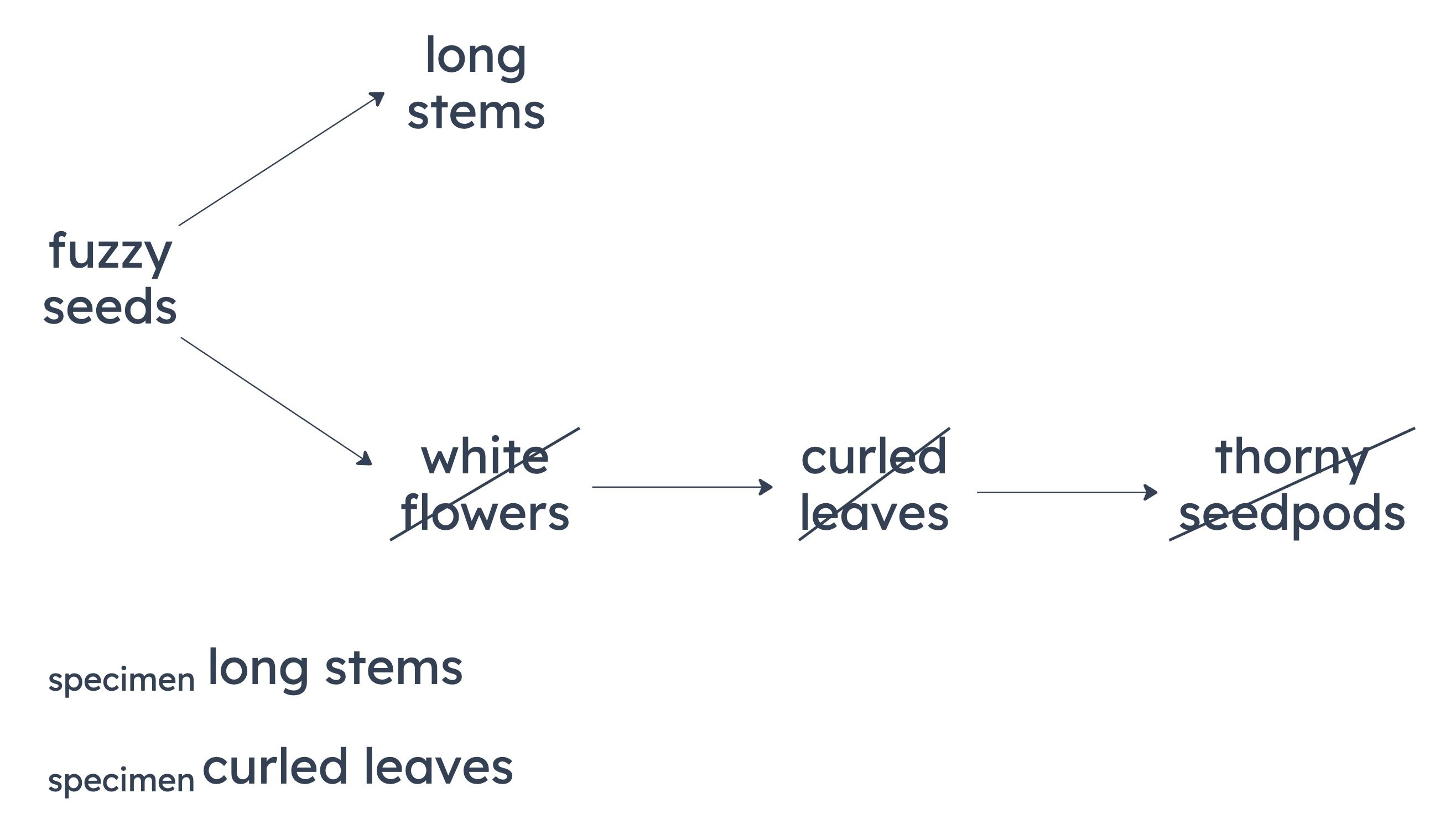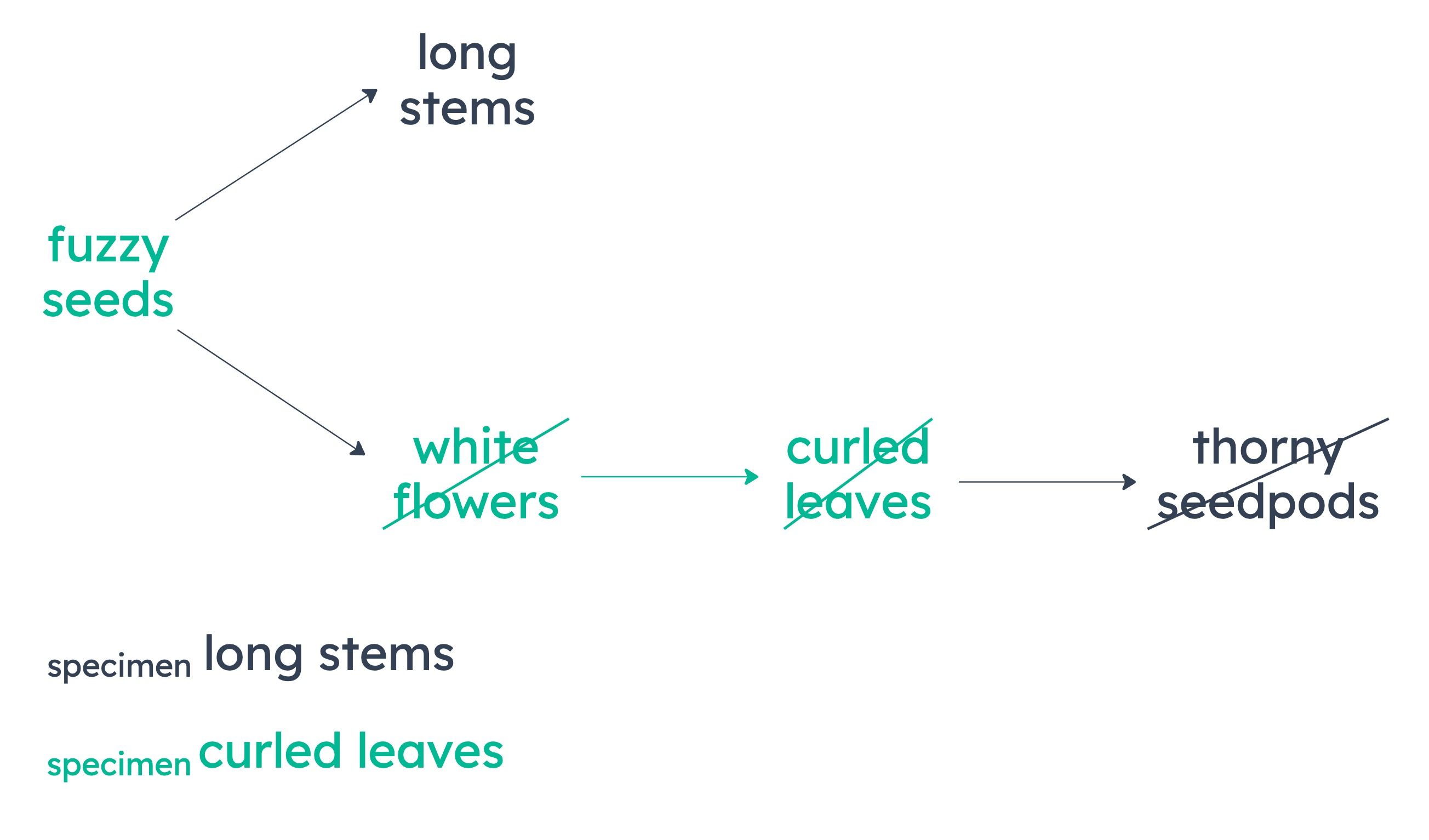
If someone is not well organized, then they are not well known.
If someone is not self motivated, then they are not well known.
A
No self-motivated salespersons who are not highly successful are well organized.
B
All salespersons who are well organized but not highly successful are self-motivated.
C
No salespersons who are well known among their peers regret their career choices.

D
All salespersons who are not well organized regret their career choices.
E
All salespersons who do not regret their career choices are highly successful.
Biologist: We know the following things about plant X. Specimens with fuzzy seeds always have long stems but never have white flowers. Specimens with curled leaves always have white flowers, and specimens with thorny seedpods always have curled leaves. A specimen of plant X in my garden has a long stem and curled leaves.
Summary
Specimens with fuzzy seeds have long stems.
Specimens with fuzzy seeds lack white flowers.
Specimens with curled leaves have white flowers.
Specimens with thorny seedpods have curled leaves.
The biologist’s plant has a long stem and curled leaves.

Very Strongly Supported Conclusions
The biologist’s specimen has white flowers.
The biologist’s specimen lacks fuzzy seeds.
A
It has white flowers and thorny seedpods.
Unsupported. We know the specimen has white flowers, but we don’t know if it has thorny seedpods. Careful with negations—“no curled leaves” is a sufficient condition for “no thorny seedpods”, but that doesn’t mean “curled leaves” is a sufficient condition for “thorny seedpods”!
B
It has white flowers but lacks thorny seedpods.
Unsupported. We know the specimen has white flowers, but we don’t know if it has thorny seedpods. Careful with negations—“no curled leaves” is a sufficient condition for “no thorny seedpods”, but “curled leaves” tells us nothing about whether a specimen has thorny seedpods!
C
It has white flowers but lacks fuzzy seeds.
Very strongly supported. As shown below, by chaining the conditional claims, we see that “no curled leaves” is a necessary condition of both “fuzzy seeds” and “no white flowers”. Having curled leaves, then, is a sufficient condition for “white flowers” and “no fuzzy seeds”!

D
It has fuzzy seeds and thorny seedpods.
Anti-supported. Because the specimen has curled leaves, we know that it doesn’t have fuzzy seeds. We can’t determine whether it has thorny seedpods—“no curled leaves” is a sufficient condition for “no thorny seedpods”, but “curled leaves” tells us nothing about thorny seedpods!
E
It lacks both white flowers and fuzzy seeds.
Anti-supported. Because the specimen has curled leaves, we know that it has white flowers. It is true that it doesn’t have fuzzy seeds.